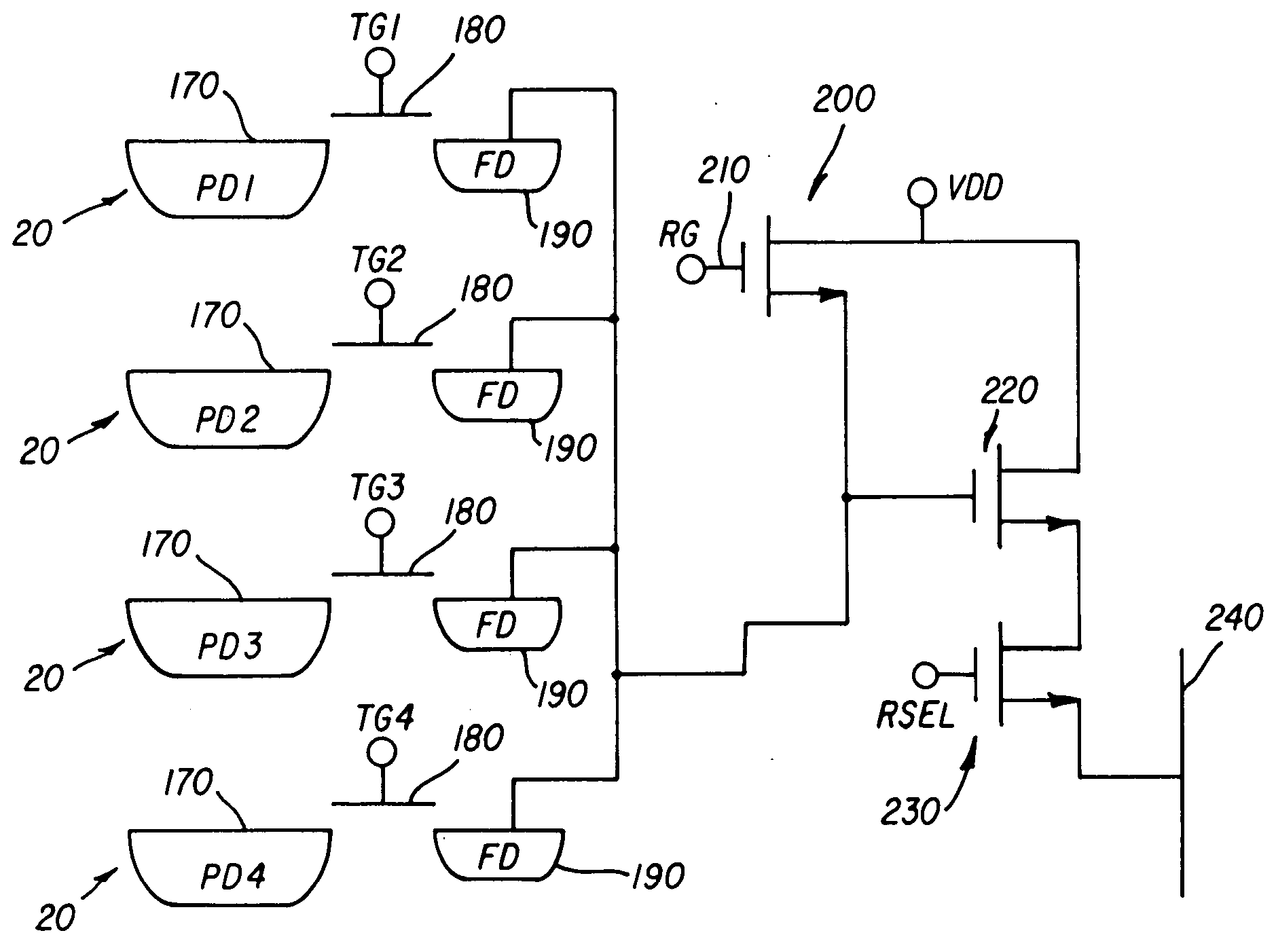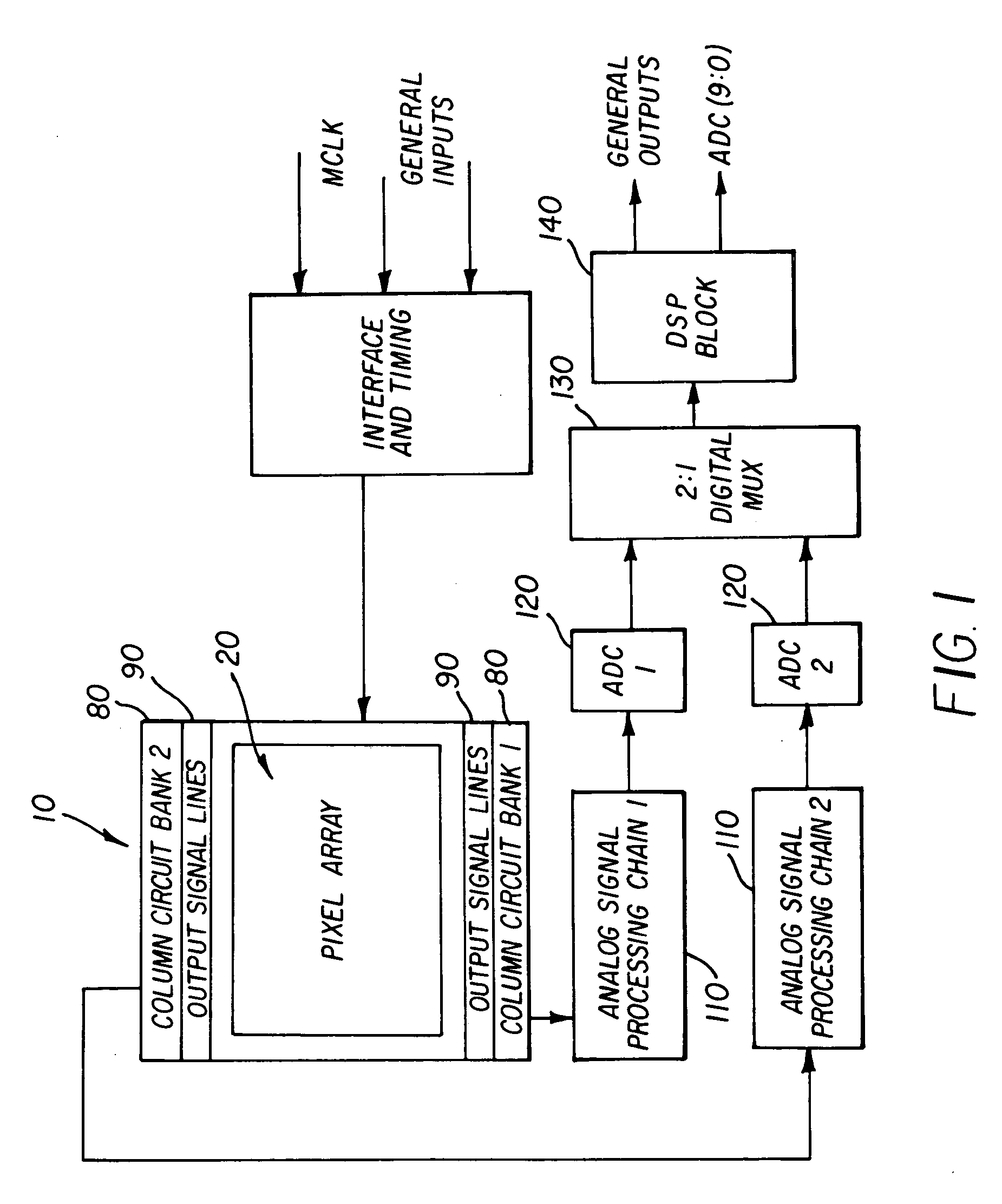Image sensor with charge binning and dual channel readout
a dual-channel readout, image sensor technology, applied in the direction of picture signal generators, television system scanning details, television systems, etc., can solve the problems of image sensor design and performance, low noise column storage and readout circuits, and insufficient signal levels for low illumination levels of small pixels, so as to achieve low noise and high sensitivity multiple resolution
- Summary
- Abstract
- Description
- Claims
- Application Information
AI Technical Summary
Benefits of technology
Problems solved by technology
Method used
Image
Examples
Embodiment Construction
The examples and diagrams provided in the description of the present invention represent one preferred embodiment of the present invention. Numerous other specific embodiments are feasible without departing from the scope of the present invention.
Referring to FIG. 1, there is shown a top level block diagram of the image sensor 10 of the present invention. The sensor array comprises a plurality of pixels 20. The pixels 20 can be any known APS or PPS x-y addressable pixel design. Two column circuit banks 80 (also referred to as storage regions), each comprising a plurality of column sample and hold circuits (not shown in FIG. 1) are electrically connected to the output signal lines 90 of the sensor array 10. Two parallel analog signal processing (ASP) chains 110 (also referred to as readout regions) are respectively connected to each column circuit bank 80. An analog to digital converter (ADC) 120 is electrically connected to each processing chain 110 for digitizing the signal. A 2...
PUM
 Login to View More
Login to View More Abstract
Description
Claims
Application Information
 Login to View More
Login to View More - R&D
- Intellectual Property
- Life Sciences
- Materials
- Tech Scout
- Unparalleled Data Quality
- Higher Quality Content
- 60% Fewer Hallucinations
Browse by: Latest US Patents, China's latest patents, Technical Efficacy Thesaurus, Application Domain, Technology Topic, Popular Technical Reports.
© 2025 PatSnap. All rights reserved.Legal|Privacy policy|Modern Slavery Act Transparency Statement|Sitemap|About US| Contact US: help@patsnap.com



